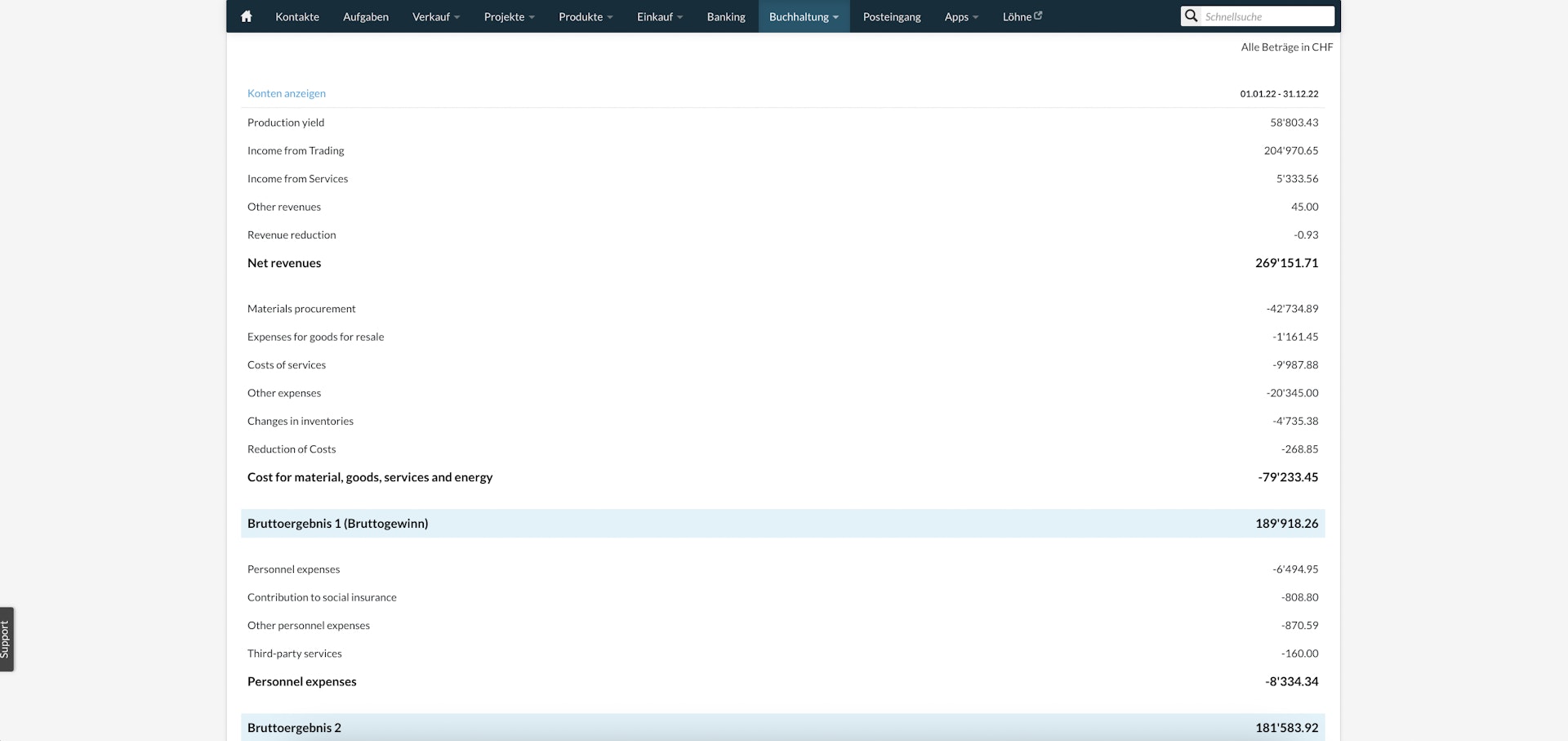The gross margin (also referred to as gross profit margin) is a company's profit before tax expressed in percent. It is an important metric that can be used to determine whether a company can cover its costs and still make a profit. In this article, we take a closer look at gross margin and how to calculate it.

What is the gross margin?
Gross margin is a metric that is usually expressed as a percentage. For the calculation, you need to know your gross profit and your sales and then place these two key figures in relation to each other. The result, the gross profit margin, is often used to assess the company's profitability. The higher the margin, the more cash the company has available to meet obligations, such as taxes.
How do you calculate gross profit margin?
To calculate the gross profit margin, you first need to know your gross profit. You can find out how to calculate this in detail here.
The gross profit margin is the percentage of gross profit compared to sales revenues. The formula for calculating this is as follows:
Gross Profit Margin = (Gross Profit / Revenue) x 100
Examples of gross profit margins
Gross profit margin varies from industry to industry. Comparisons are only meaningful if sales volumes are roughly comparable.
Here is a list of global examples of gross profit margins for the technology, telecommunications, utilities and insurance industries.
In April 2022, technology giant Apple announced a service margin of 73 percent. In Switzerland, too, supermarket giants Migros and Coop record high margins for their industry of around 40 percent and around 30 percent.
What does a high gross margin mean?
As gross profit margin is usually expressed as a percentage, a high profit margin does not always equal a high monetary value. A high margin can arise when buyers accept products at a very high selling price (e.g., due to quality or rarity) or when manufacturing costs are very low (e.g., mass-produced goods).
| Product | Selling price | Costs | Gross profit* | Margin |
| Handmade soap with raw materials from the EU | CHF 18 | CHF 8 | CHF 18 - CHF 8 = CHF 10 | 56% |
| Floral bouquet | CHF 45 | CHF 15 | CHF 45 - CHF 15 = CHF 30 | 67% |
*For illustration purposes, the calculation in the example is based on a sales quantity of 1 unit. Gross profit = Turnover - Costs.
The size of the margin ultimately depends on the sector and competition. Ideally, entrepreneurs should already decide on the intended pricing policy in the start-up phase. Pricing policy is part of McCarthy's marketing mix and should be reflected in every business plan as well as in the ongoing business. Because once a product or service is on the market and available at an incorrectly calculated price, it is difficult to make adjustments afterwards.

What to do if you miscalculate gross margin
As a rule, you notice relatively quickly whether you have miscalculated a gross profit margin. Either your products move slowly because the price is too high for your customers, or you're selling a good amount and still can't cover your costs at the end of the month. Both situations are crucial for companies to continue on the market in the long-term.
Possible steps to correct the gross profit margin:
- Compare your prices with the competition – could you raise the price to match theirs without losing customers?
- Consider your product's USPs (Unique Selling Points). Why and how can you justify charging your customers a higher price?
- If a price increase is out of the question, see if you could reduce production costs (possibly by working with another supplier).
- Is there a way to reduce fixed costs or reduce costs at other stages of production so you can still cover your costs with the existing margin?
Gross profit margin in bexio
If you manage your accounting with bexio, you can easily calculate gross profit margin yourself. Gross profit is displayed in the income statement. Using this figure, you can then calculate the gross profit margin using the formula above.
FAQ: Frequently asked questions about gross profit margin
As with gross profit, only production costs are deducted from the gross profit margin. No further costs, interest, taxes, etc., are taken into account. Therefore, gross profit margin shows how much money is available to the company to pay further costs, such as taxes. With net profit, these costs have already been deducted and profit can be considered as actual profit earned. Similarly, the net profit margin is the margin that is actually earned.
No, gross profit is the turnover generated by the company minus acquisition costs. If you then deduct other costs from gross profit, such as interest, taxes, etc., the remainder is net profit.
It depends on what you are comparing your company to. Gross profit margin is a suitable metric if you want to compare yourself with other companies in your industry. The comparison only works where sales volumes and production costs are roughly similar. Comparing the gross profit margin of an ice cream seller to that of a jeweller is not practical.
Normally, you already decide on your gross profit margin when you create a business plan. Even before the company is established. At that stage, you deal in detail with the competitive situation and calculate your sales prices and therefore your gross profit margin too. It is important not to set the margin too high or too low compared to competitors, as this can quickly lead to a loss of sales or cost problems.
Test out bexio now for 30 days free of charge and with no obligation
Test all the features of bexio, the simple business software for your SME administration.





